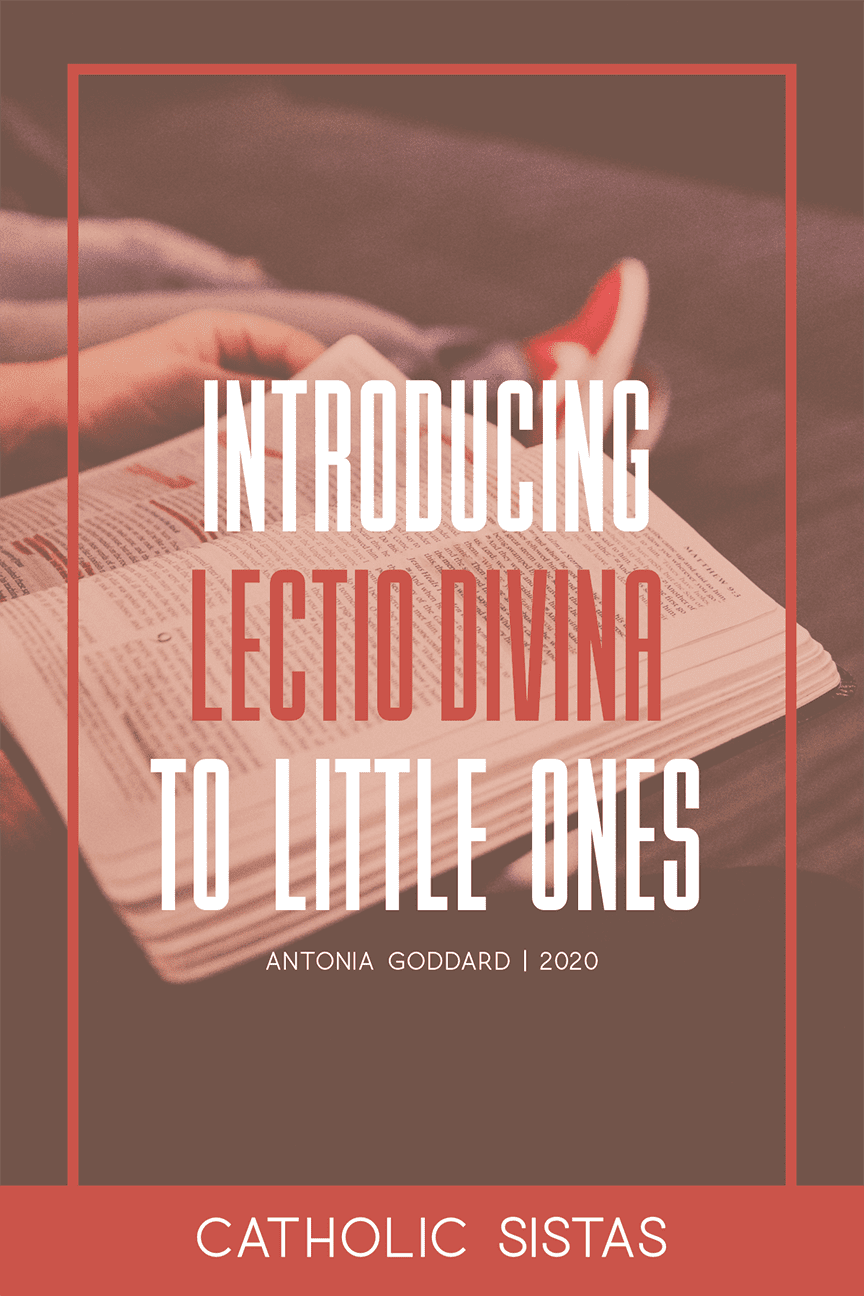
Lectio Divina, or “Divine Reading”, is a wonderful way to grow closer to God through closer study, prayer, and meditation around a particular scripture passage or passages. As it takes a certain amount of concentration and contemplation, it’s often considered more suitable for adults or older children, but it’s very achievable for younger children as well.
Whether you have young children, or would like to introduce Lectio Divina to children in your school, retreat centre, or prayer group, I hope you can use the tips I’ve developed to bring the joy of Lectio Divina to the younger generation!
1) Choose a suitable passage
This is perhaps the most important part of Lectio Divina, but especially when choosing a passage for children. Selecting a familiar passage with a good story and lots of visual cues can help children with visualising the texts, particularly for their first time. Some good examples include:
– Feeding of the 5,000
– Jesus walking on water
– The Nativity
– The Good Samaritan
– The Prodigal Son
Keep the passage you choose fairly short, with not too many difficult words.
2) Choose a good time and place.
Just before playtime and the children will be restless, just before lunch and there will be rumbling tummies. Choose a good time in the day when they are most likely to be able to sit or lie still, but still with enough energy to think and chat afterwards. Just after a mid-morning or mid-afternoon snack is a good time, or after a little run around to dispel any energy!
You ideally want to do this in a room big enough for all the children to find somewhere comfortable to sit or lie down. Outside spaces can be appealing, particularly if you’ve chosen a passage about Creation, but remember it can be harder for a voice to carry outside and it’s easier for children to get distracted when there’s more noise around.
3) Begin with a few relaxation exercises.
Start by getting the children to stretch out, curl up into a little ball, and then relax each part of their body in turn. It’s not strictly part of the Lectio Divina exercise, but it helps get the wriggles out of the littlest children and get them into a relaxed, calm mindset.
Explain briefly what Lectio Divina is, that you’re going to read a short passage and ask them to think a bit about what it means, and what God is asking of them through the Scripture. Let them know that it’s okay for their mind to wander, and just use the passage as an opportunity to let God speak to them.
Playing some soft, relaxing music can help get them into the right mood.
4) Reading
Read the passage aloud, clearly. If you like, you can give children a printout of the text so that they can follow along. Make sure you explain any difficult words as you go, and that everyone understands the passage being read.
5) Meditate
Give the children a few minutes of silence to think about the passage.
Depending on their age, it may be helpful to offer them some prompts to help their train of thought. If using a passage from the Nativity, for example, some prompts could include:
– Imagine you’re a shepherd. How do you feel when you see the Angels?
– What is Mary thinking? Is she comfortable in the stable? Is she happy?
– If you saw the Holy Family, what would you do? Do you have any questions?
– What would you like to ask God? Bring your questions to him and listen to his answers.
6) Read the passage aloud again
After giving the children some prompts, it is helpful to go back to the text and read it again, allowing them to think about the passage from different perspectives. Depending on the age and maturity of the children, you can then have another period of meditation and thought, or read the passage a couple of times.
7) Prayer
Following this with a prayer everyone knows and can join in is a lovely way to bring the group back together.
8) Discussion
Discussion is not typically part of Lectio Divina, but with young children it’s a great way to see how well they have understood the passage. Many children want to share the experiences they have had and benefit from a bit of discussion and gentle guidance as to how this can guide their prayer in future.
Finally, but most importantly:
9) Lower your expectations!
With very young children, it will be tricky to get them to concentrate on Lectio Divina quietly for more than a few minutes. In a big group, I’m often reading with one hand whilst settling some runners-around with the other. It’s easy to get disheartened and think that no-one is paying attention, but young children quickly get the hang of it, and come up with some wonderfully insightful thoughts on the passages.
Do let me know your experiences – and any more tips you may have! – of introducing children to Lectio!
